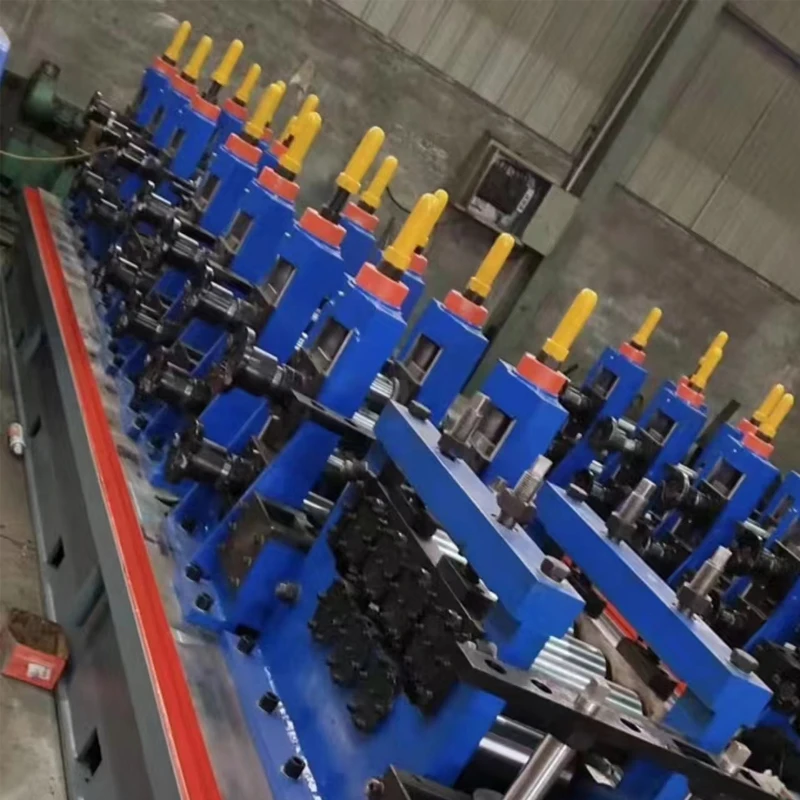Versatile Cutting Machine for Precision Applications in Various Industries
The Flying Saw Machine Revolutionizing Cutting Technology
In the realm of manufacturing and processing industries, efficiency and precision are paramount. The advent of the flying saw machine marks a significant advancement in cutting technology, bringing forth unparalleled benefits for various applications. Designed to enhance productivity while maintaining high-quality cuts, the flying saw machine is transforming the way materials are processed in industries ranging from metal fabrication to woodworking.
What is a Flying Saw Machine?
A flying saw machine is an innovative cutting tool that utilizes a high-speed saw blade to cut through materials as they move along a production line. The primary feature distinguishing it from traditional saws is its ability to make cuts while the material is in motion. This unique capability allows for continuous processing, thus optimizing cycle times and significantly increasing throughput.
The Mechanism Behind the Flying Saw Machine
The core mechanism of a flying saw machine involves a combination of advanced robotics and precision engineering. The saw blade is mounted on a sophisticated arm that is controlled by a high-speed actuator. As the material feeds into the machine, sensors detect its position and speed, enabling the saw to time its cutting action perfectly with the movement of the material. This synchronized operation ensures clean, precise cuts without the need to stop the material flow, minimizing interruptions in the production process.
Advantages of Using a Flying Saw Machine
1. Increased Efficiency One of the most compelling advantages of the flying saw machine is its ability to enhance productivity. By cutting materials on the fly, manufacturers can process larger volumes of materials in shorter periods, thereby increasing overall efficiency.
2. Precision Cuts The advanced technology employed in flying saw machines allows for exceptionally precise cuts. High-speed saw blades minimize vibrations and ensure that cutting is accurate, which is critical in industries that require tight tolerances.
3. Versatility Flying saw machines are highly versatile and can be utilized for various materials, including metals, plastics, and wood. This adaptability allows manufacturers to employ a single machine for diverse applications, reducing the need for multiple specialized tools.
flying saw machine

4. Reduced Waste The precision of cuts produced by flying saw machines contributes to reduced material waste. Accurate cutting ensures that raw materials are used optimally, leading to improved cost efficiency and environmental sustainability.
5. Improved Safety Compared to traditional cutting methods, flying saw machines are safer for operators. With automated controls and minimal manual handling, the risk of accidents and injuries is significantly reduced.
Applications Across Industries
The versatility and efficiency of flying saw machines have led to their adoption across various sectors. In metal fabrication, flying saws are used for cutting large metal beams and tubes with precision, essential in construction and manufacturing. In woodworking, these machines enable the rapid processing of lumber and composites, essential for furniture production and construction materials. Additionally, the automotive industry utilizes flying saws for swift and accurate cutting of components, ensuring that assembly lines remain efficient and effective.
Future Trends in Flying Saw Technology
As industries continue to evolve, the technology behind flying saw machines is expected to advance further. Innovations in artificial intelligence and machine learning may lead to smarter machines that can adapt to changing materials and cutting requirements in real time. Additionally, improvements in blade technology and materials may enhance the durability and lifespan of saw blades, further increasing efficiency and reducing operational costs.
Moreover, integration with Industry 4.0 initiatives promises to enhance data tracking and analysis, allowing manufacturers to monitor performance, predict maintenance needs, and optimize production processes. The shift towards automation and smart manufacturing will likely solidify the flying saw machine’s position as an essential tool in modern production environments.
Conclusion
The flying saw machine represents a significant leap forward in cutting technology, offering manufacturers enhanced efficiency, precision, and versatility in their operations. As industries continue to demand higher productivity and lower operational costs, the flying saw machine stands out as a vital solution, paving the way for a more streamlined and efficient manufacturing future. As technology advances, the potential for flying saw machines only becomes more promising, securing their place in the machine-tool landscape for years to come.
-
Top Straightening Machine Supplier – High Precision Solutions for Metal ProcessingNewsJun.10,2025
-
High Efficiency Rotary Shear Machine for Precision Cutting Versatile Rotary Shear Shredder & Cordless OptionsNewsJun.10,2025
-
High-Precision Cold Rolled Steel Machine for Quality ProductionNewsJun.09,2025
-
Metal Tube Making Machine – High Precision & AutomationNewsJun.09,2025
-
Automated Lami Tube Manufacturing Machine High Output & PrecisionNewsJun.09,2025
-
Premium Roll Forging Machines High-Precision Metal Forming SolutionsNewsJun.09,2025


